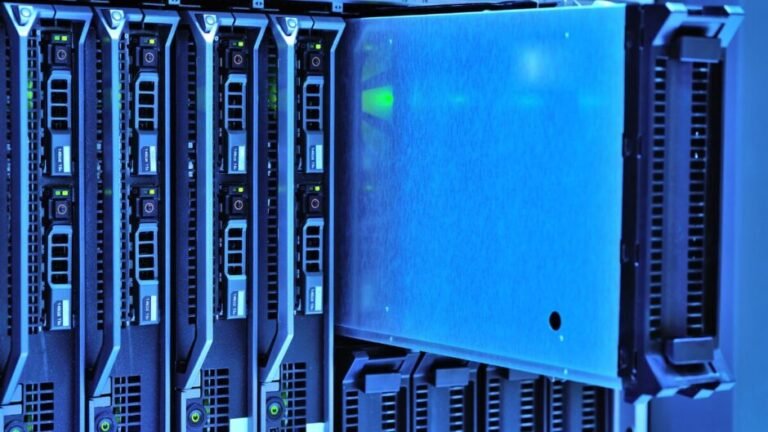Top 100 CompTIA Security+ Courses and Q&A
CompTIA Security+ certification stands as a pivotal milestone in the realm of cybersecurity education.
This certification equips individuals with essential knowledge in threat management, risk mitigation, cryptography, network security, and more.

The advantages of mastering CompTIA Security+ are multifaceted. Firstly, it validates a comprehensive understanding of cybersecurity principles, preparing professionals to identify and address security vulnerabilities across diverse technological landscapes.
Holding this certification not only enhances career prospects but also signifies a commitment to staying updated with the latest security trends and protocols.
It serves as a gateway to numerous job roles in cybersecurity, such as security analyst, systems administrator, or network engineer, providing a solid foundation for further specialized certifications like CISSP or CEH.
Additionally, in an increasingly digital world where cybersecurity is paramount, possessing CompTIA Security+ signifies a dedication to safeguarding systems and data, making it an invaluable asset in today’s tech-driven industries.
Here are top 100 CompTIA Security+ courses with discounted pricing from UDEMY.
Courses could not be fetched. Please try again.Here are 20 multiple-choice questions (MCQs) related to CompTIA Security+ along with their respective answers:
Which of the following is an example of a symmetric encryption algorithm?
A) RSA
B) AES
C) Diffie-Hellman
D) ECC
Answer: B) AES
What type of attack involves an attacker intercepting and altering communication between two parties?
A) Spoofing
B) Man-in-the-Middle (MitM)
C) DDoS
D) Phishing
Answer: B) Man-in-the-Middle (MitM)
Which access control model assigns permissions based on job roles or responsibilities?
A) Mandatory Access Control (MAC)
B) Discretionary Access Control (DAC)
C) Role-Based Access Control (RBAC)
D) Rule-Based Access Control (RuBAC)
Answer: C) Role-Based Access Control (RBAC)
Which protocol provides secure transfer of files over a network?
A) FTP
B) TFTP
C) SSH
D) SNMP
Answer: C) SSH
What is the primary purpose of a firewall in a network?
A) Encrypting data
B) Monitoring network traffic
C) Filtering and controlling incoming/outgoing traffic
D) Managing user access control
Answer: C) Filtering and controlling incoming/outgoing traffic
Which security concept is designed to ensure that data is not disclosed to unauthorized users?
A) Confidentiality
B) Integrity
C) Availability
D) Authentication
Answer: A) Confidentiality
Which cryptographic hash function is commonly used for integrity verification?
A) MD5
B) DES
C) AES
D) SHA-256
Answer: D) SHA-256
What does an Intrusion Detection System (IDS) do?
A) Prevents all network attacks
B) Identifies and alerts about potential security threats
C) Encrypts data in transit
D) Controls access to a network
Answer: B) Identifies and alerts about potential security threats
What is the purpose of a VPN (Virtual Private Network)?
A) To authenticate users
B) To protect data during transmission over a public network
C) To monitor network traffic
D) To filter spam emails
Answer: B) To protect data during transmission over a public network
Which type of malware is designed to block access to a computer system until a sum of money is paid?
A) Spyware
B) Ransomware
C) Adware
D) Worm
Answer: B) Ransomware
What port is commonly used for secure HTTPS communication?
A) 80
B) 443
C) 21
D) 25
Answer: B) 443
What is the purpose of a token in two-factor authentication?
A) It stores passwords securely
B) It generates one-time passwords
C) It encrypts communication
D) It verifies email addresses
Answer: B) It generates one-time passwords
Which of the following is a characteristic of a DDoS attack?
A) Gaining unauthorized access to data
B) Infecting systems with viruses
C) Overwhelming a network with traffic
D) Exploiting software vulnerabilities
Answer: C) Overwhelming a network with traffic
What security principle ensures that information is accurate and trustworthy?
A) Confidentiality
B) Availability
C) Integrity
D) Non-repudiation
Answer: C) Integrity
What is the purpose of a security policy within an organization?
A) To enforce strict access control
B) To provide physical security
C) To define rules and guidelines for protecting assets
D) To manage software updates
Answer: C) To define rules and guidelines for protecting assets
Which of the following authentication methods is considered the least secure?
A) Biometric authentication
B) Single-factor authentication
C) Multi-factor authentication
D) Token-based authentication
Answer: B) Single-factor authentication
What type of attack floods a network with ICMP Echo Request packets?
A) Smurf attack
B) Spoofing attack
C) Phishing attack
D) Buffer overflow attack
Answer: A) Smurf attack
What is the primary goal of a penetration test?
A) To secure a network against future attacks
B) To identify vulnerabilities in a system
C) To recover lost data
D) To monitor network traffic
Answer: B) To identify vulnerabilities in a system
What is the purpose of a Content Delivery Network (CDN)?
A) To manage digital certificates
B) To protect against DDoS attacks
C) To improve the delivery of web content to users
D) To encrypt email communication
Answer: C) To improve the delivery of web content to users
Which protocol is used for securely transmitting email messages?
A) SMTP
B) POP3
C) IMAP
D) S/MIME
Answer: D) S/MIME































